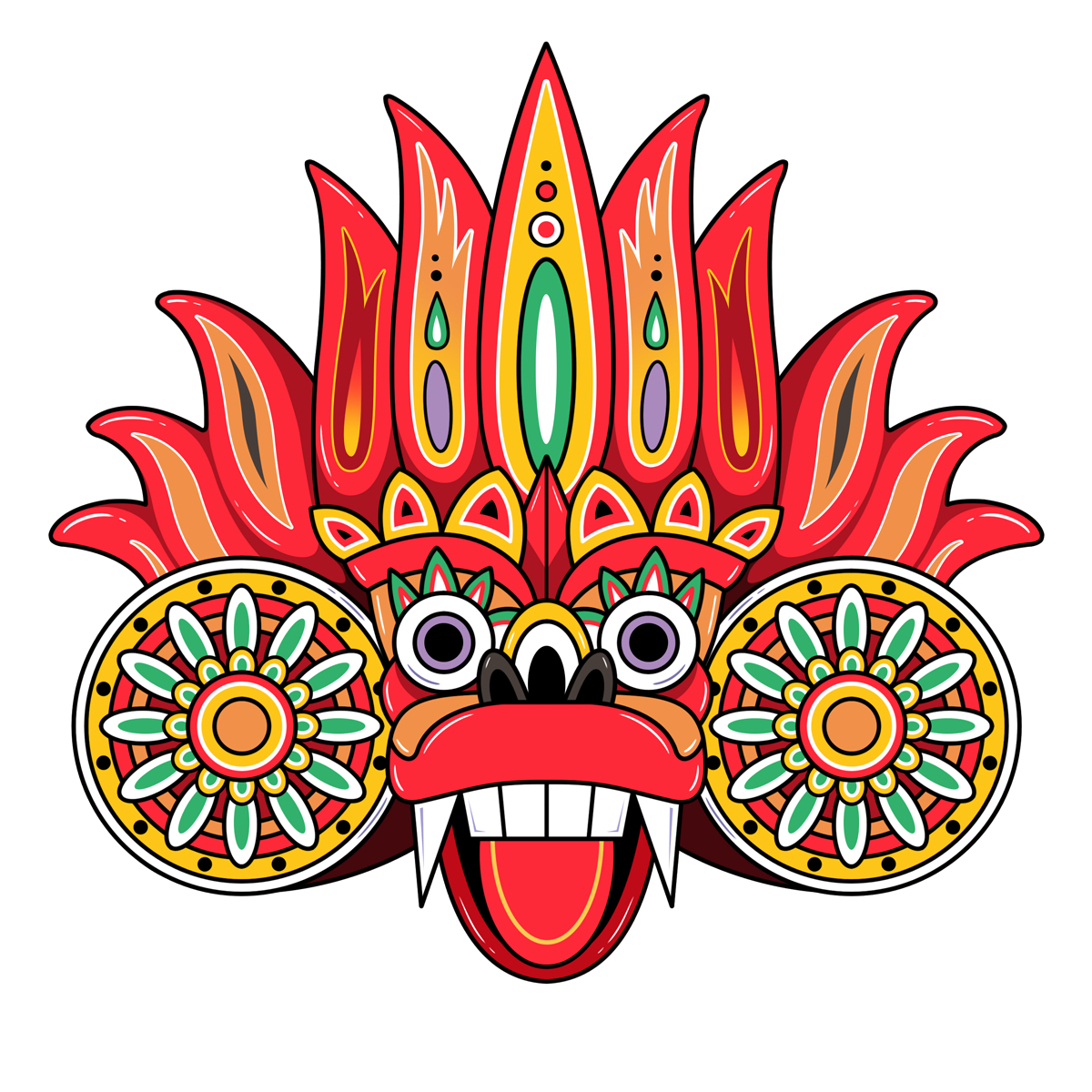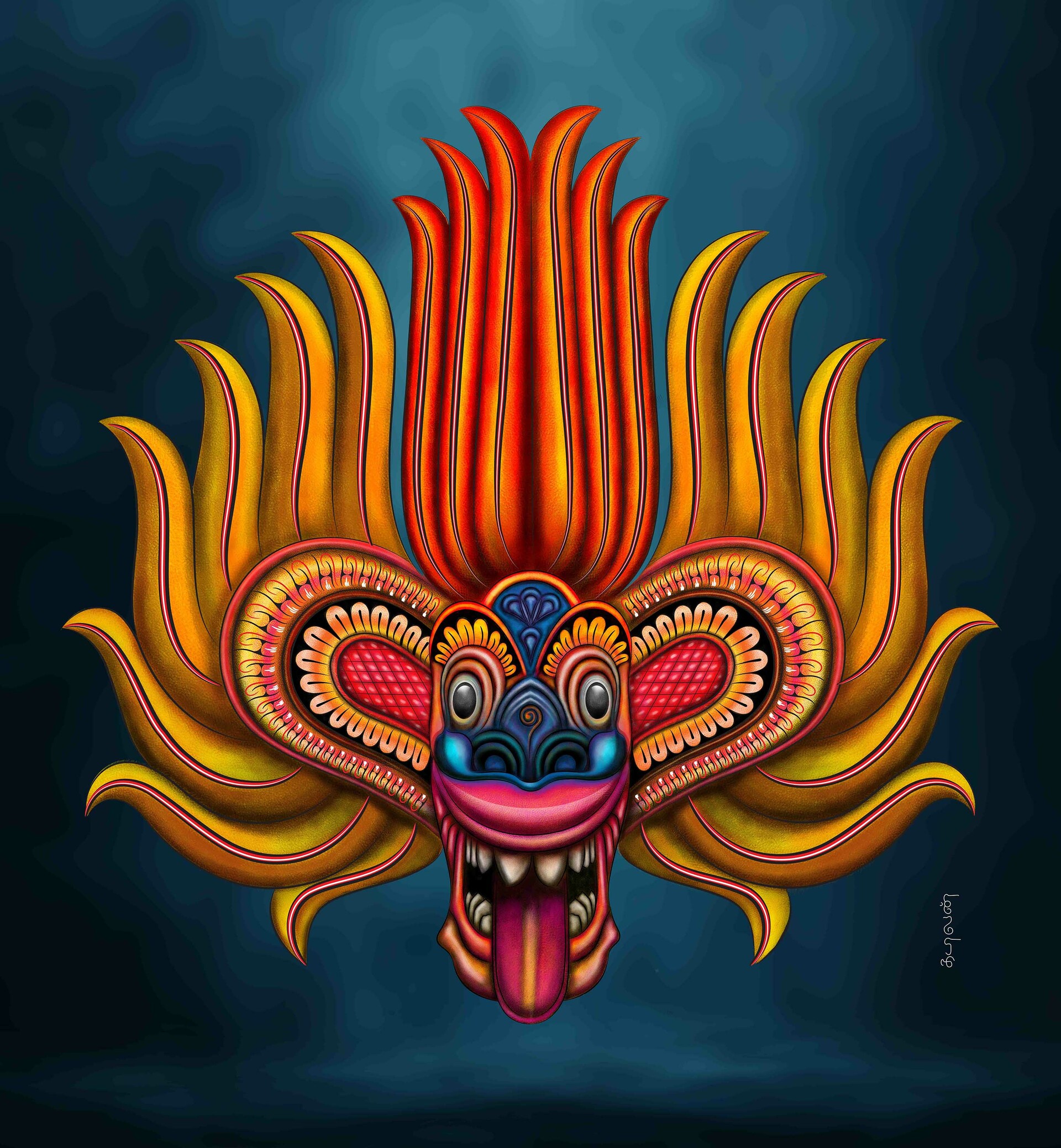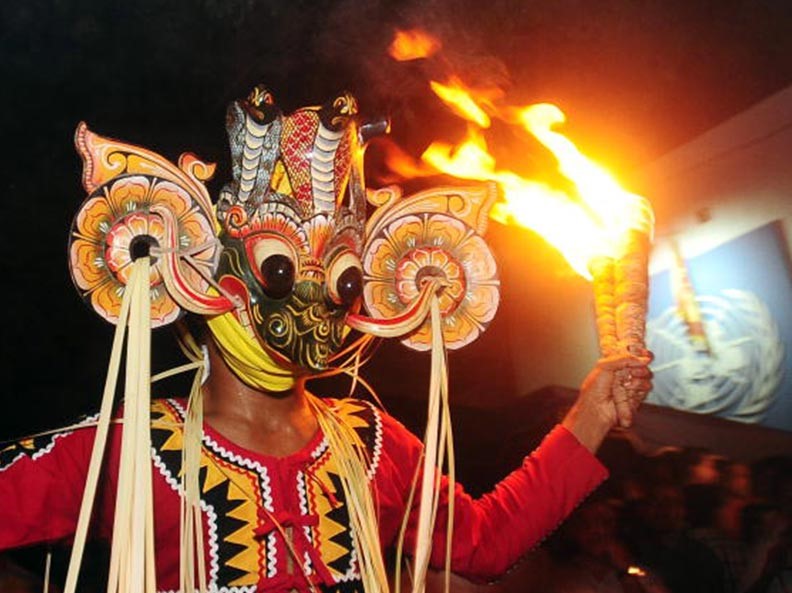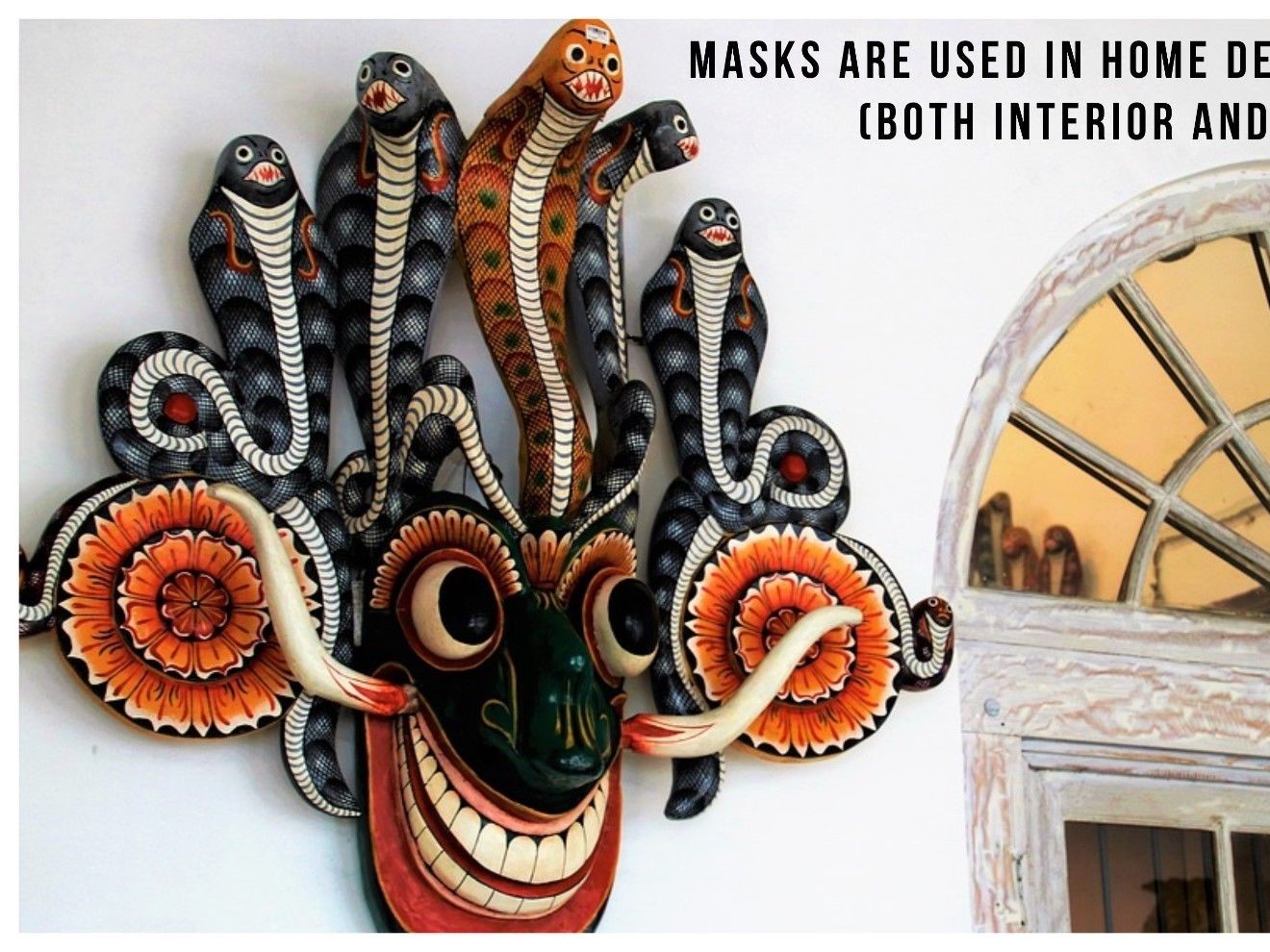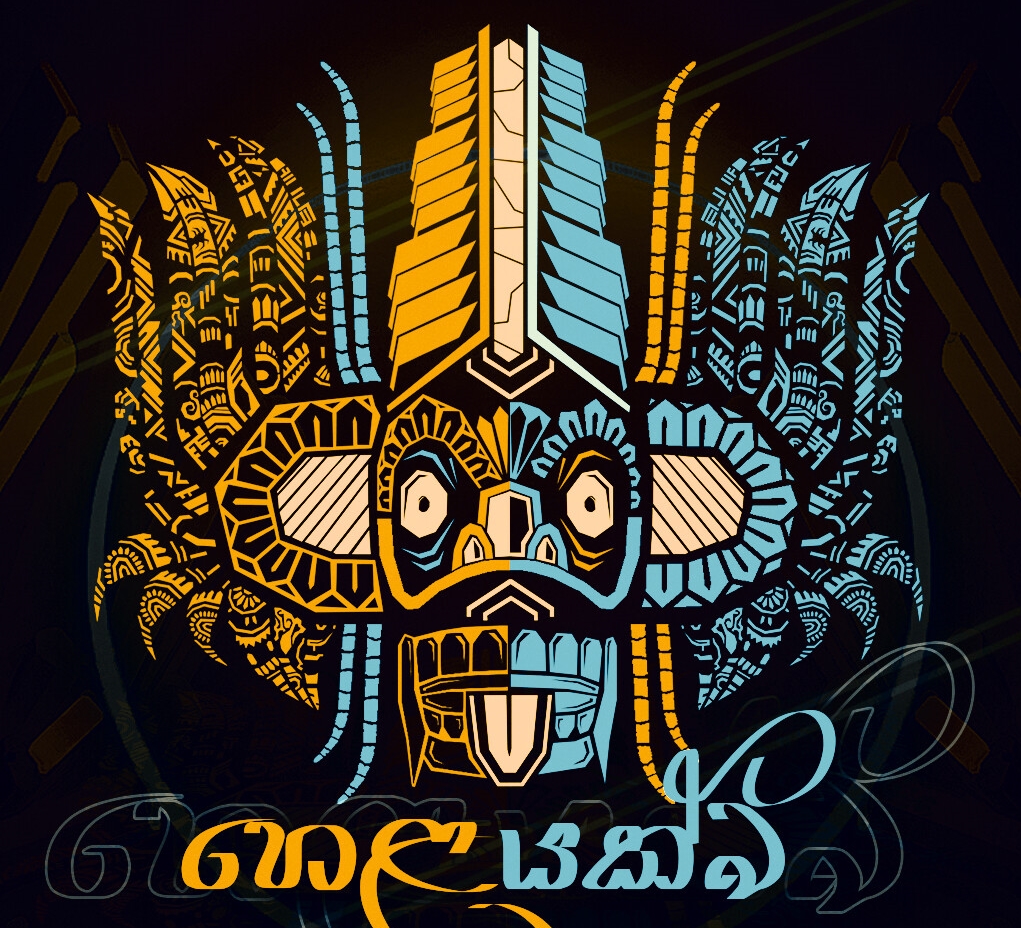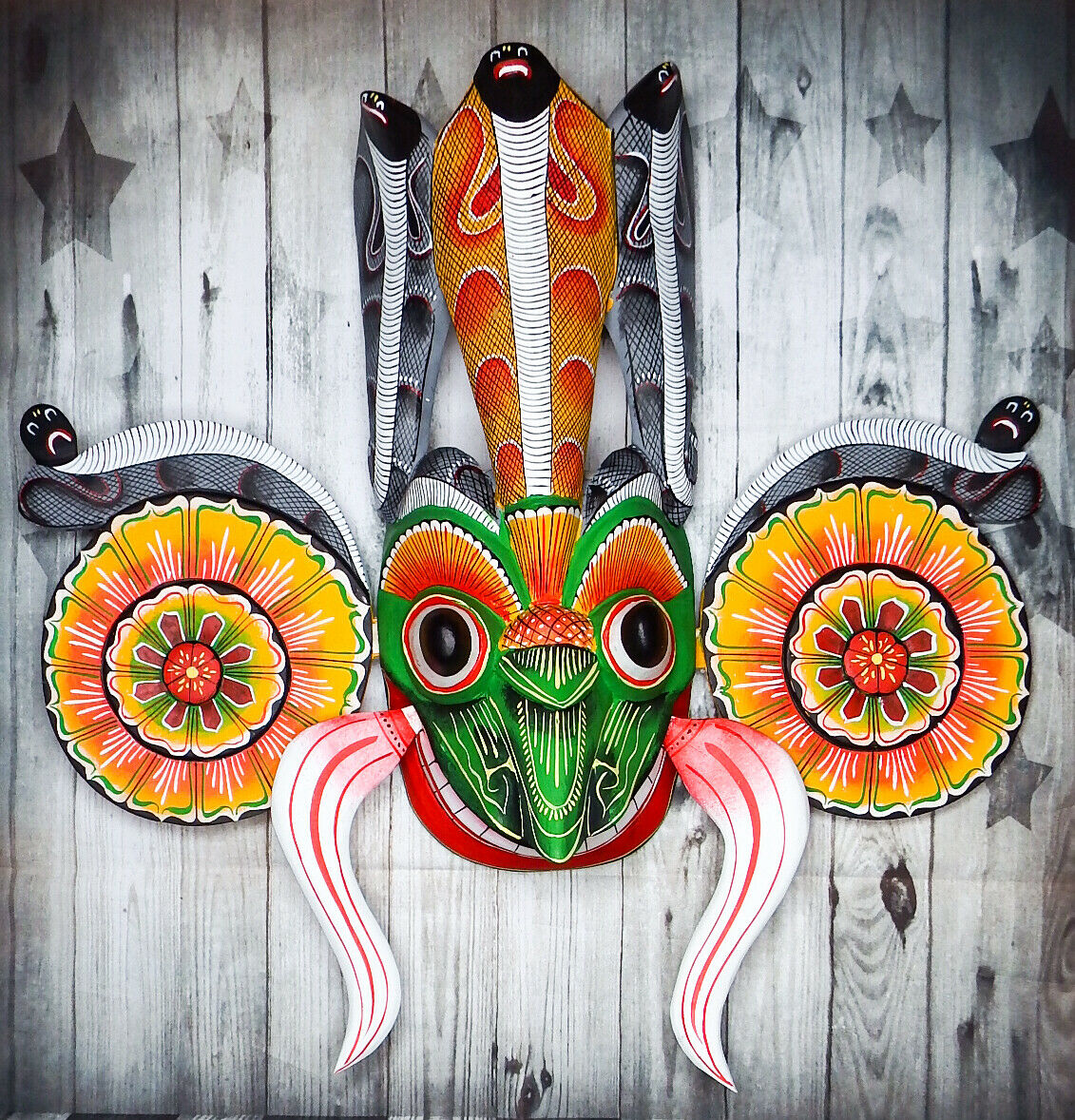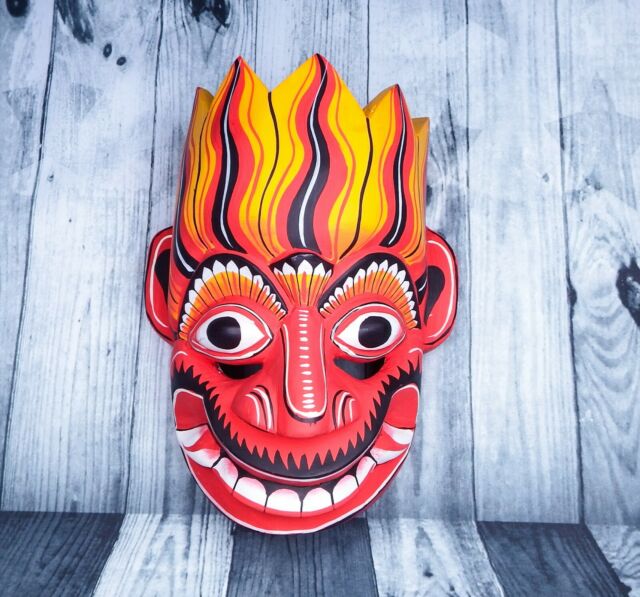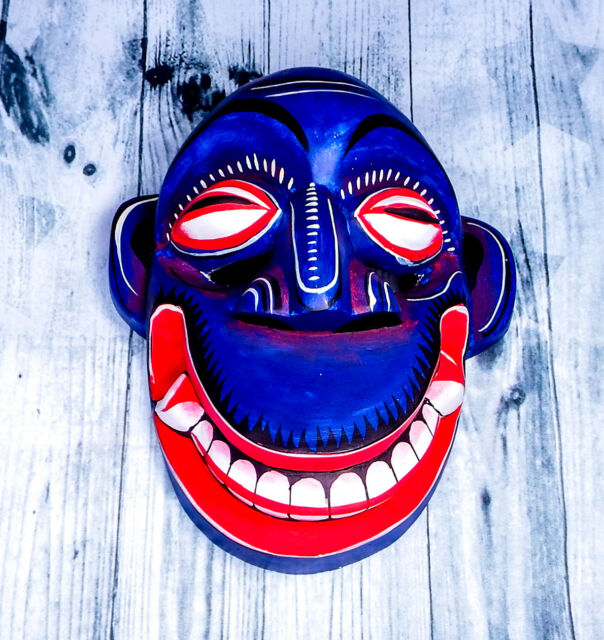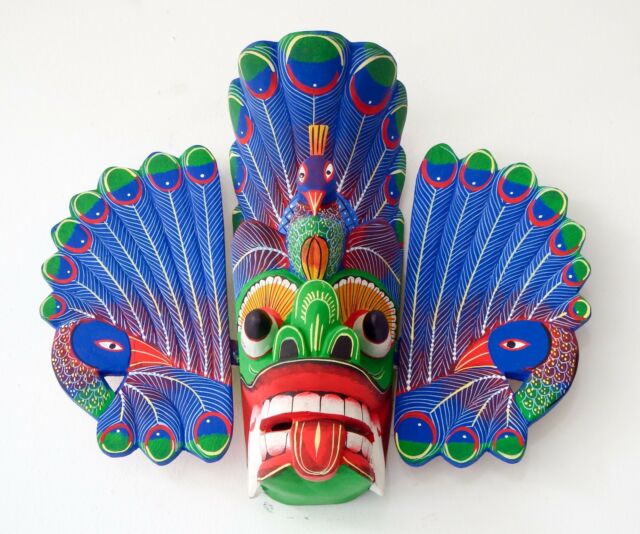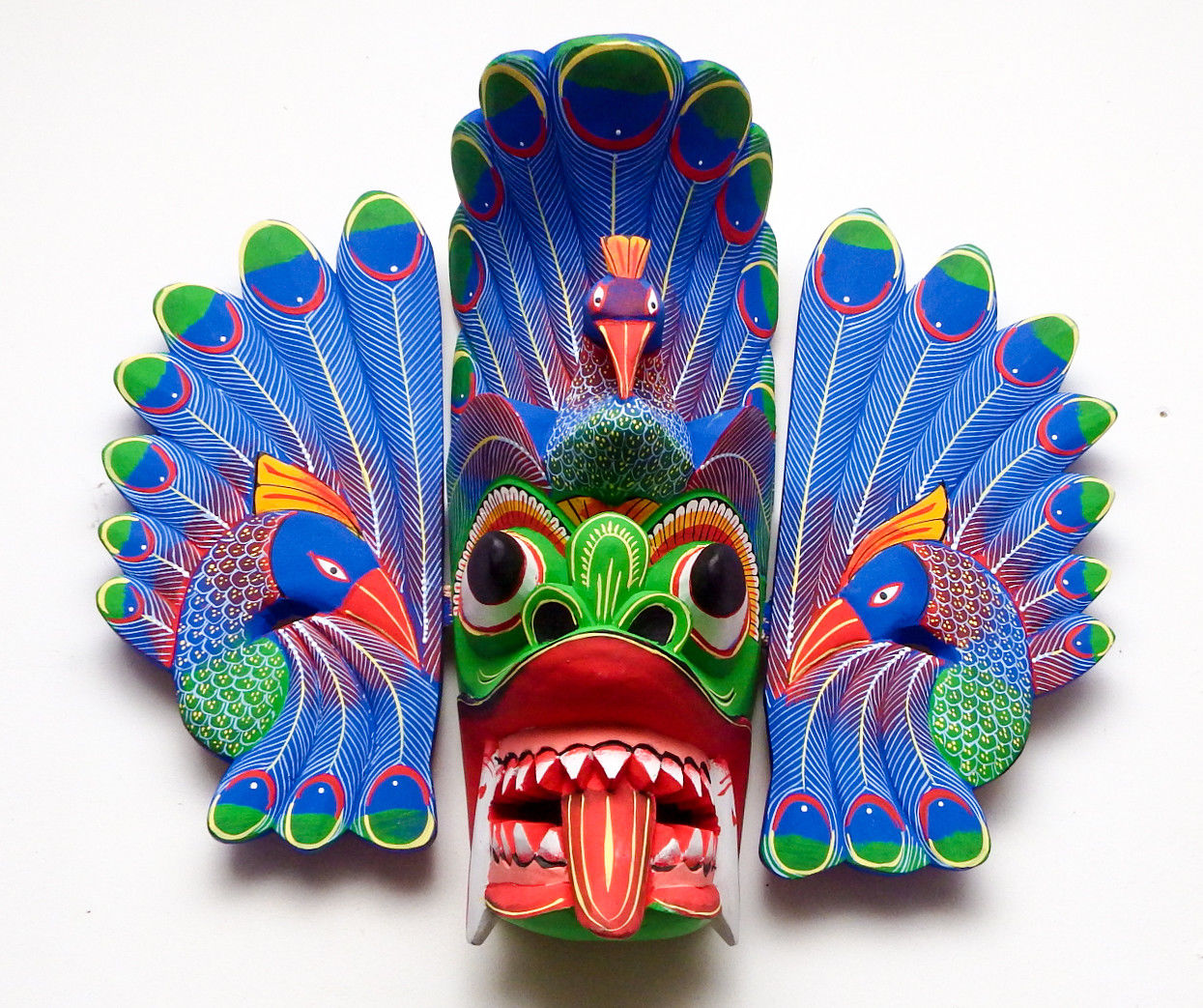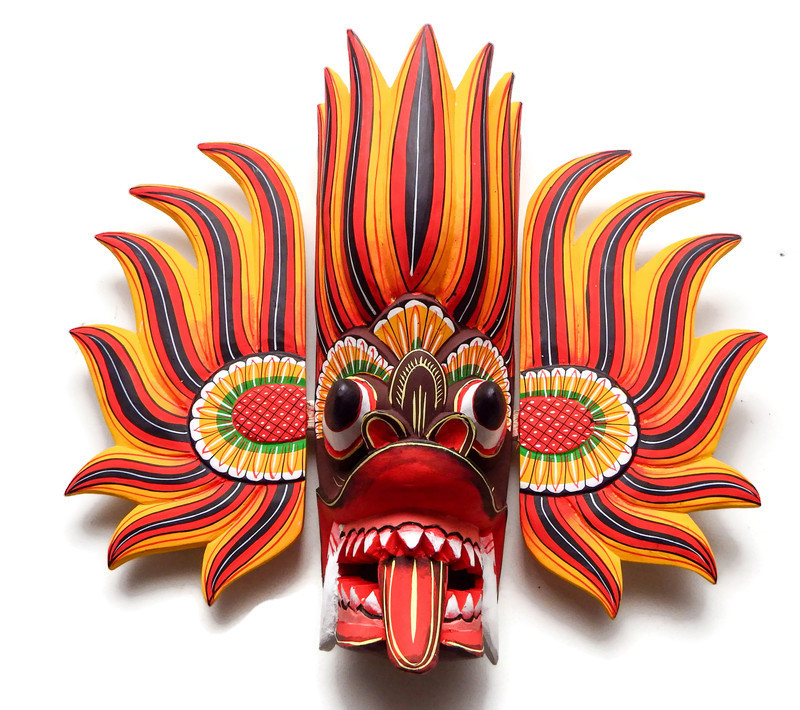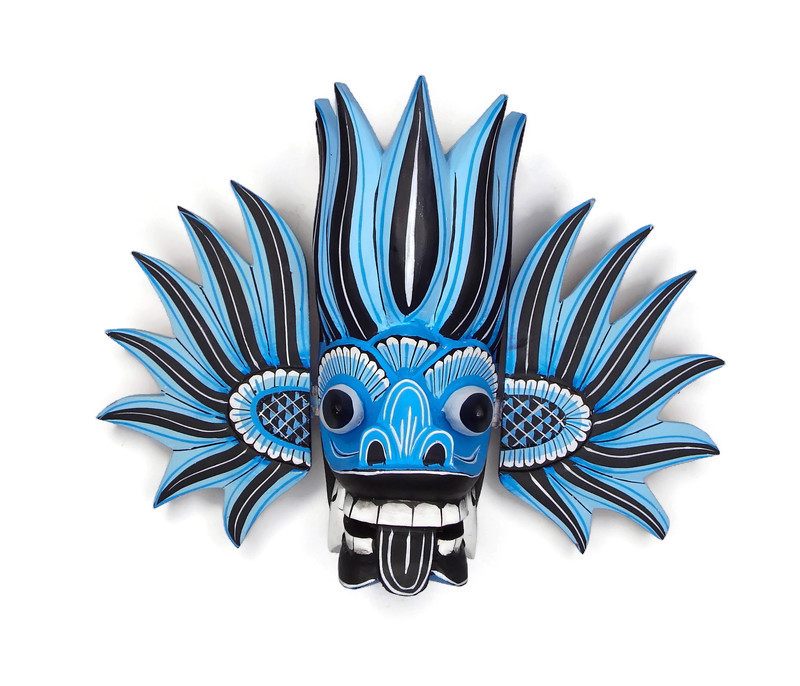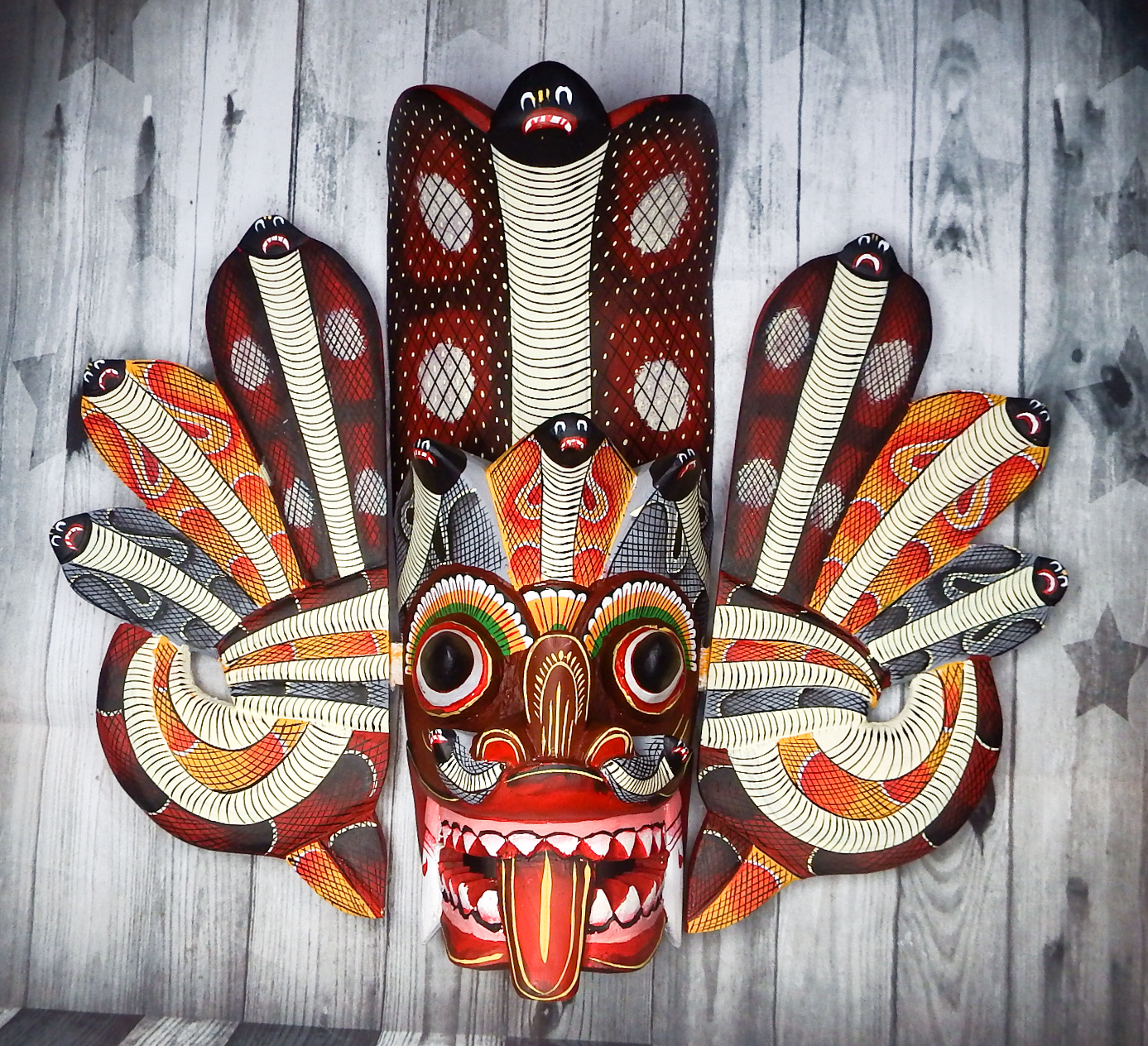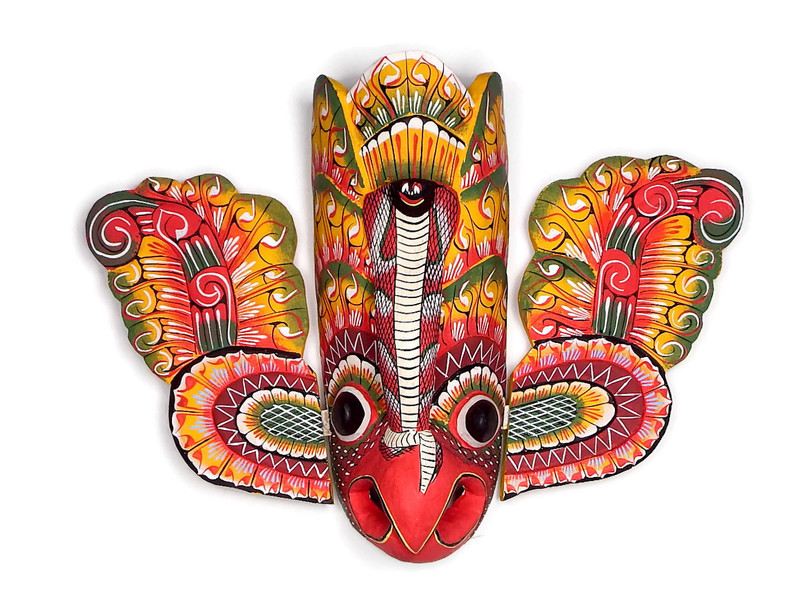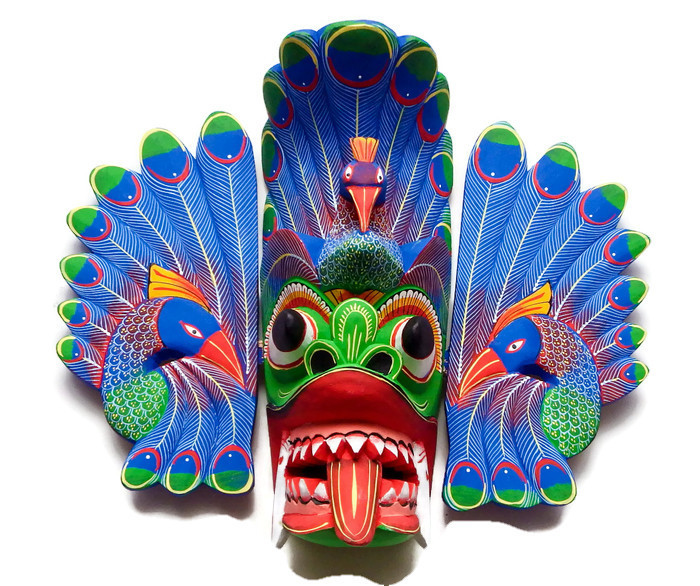The devil mask was the first thing that would greet any visitor to the ancestral place. The wooden devil mask is now becoming a rare sight. Soon it would be a thing of history.
Where have these masks gone?
Most traditional crafts in Sri Lanka face the danger of oblivion.
Mask carvers have practised their skills for generations. However, the modern world has hardly any need for a skilled traditional master craftsman, said Kanchana Wijesuriya, a granddaughter of well known master craftsman Ariyapala Gurunanse.
Masks have been used from time immemorial by people as a means of deception as well as protection. In our traditional work of jesters (Kolam), Bali , Thovil and for finding relief, mask wearing dancing were given a prominent place.
Masks depict the various moods that get embossed on our faces as reflections of the various emotions such as love, anger, fury, joy, fear and sorrow.
The history of masks goes back even before 1895. Masks had been used for popular stories and characters performed. The art of masks is believed to have derived from South East India. It had strong relations with the worshiping of devils.
Sinhala books such as Lo Weda Sangarawa and Guttila Kavya provide evidence of dancing which used masks in the ancient Ceylon.
At present, the art of masks is confined to a few families in southern part of the island. Ambalangoda is a classic example also known as the City of Masks.
Ambalangoda Mask Museum includes a workshop and a small library loaded with anthropological material on masked performances. It has been a popular cultural stopover since 1987.
Ariyapala Wijesuriya Gurunnanse is lucky as his fifth generation is among the few who still practise this traditional art. His grandchildren take a great effort to preserve this craft for the next generation even not to mention the numerous challenges in the industry.
Ariyapala & Sons provides two opportunities: job and training opportunities. It is home to a large number of craftsmen. Kanchana Wijesooriya has no faith in a future for the industry. The young has no interest in the art. Most youngsters simply want to earn money and do not want to study this art deeply.
"More than 99.9 percent of our masks are purchased by foreigners. Unfortunately local people do not have an idea about the value of this art. They only go after modern crafts such as melting ice carvings."
Kanchana emphasized that the government intervention is quite necessary to continue this tradition of art from generation to generation.
There are different types of masks such as Kolam, Sanni and Raksha. The Kolam masks are mainly used in dramas and performances. Popular Kolam masks are Jasaya and Lenchina. Sanni Masks are used to treat illness and there are about many types of Sanni masks used in Sri Lanka. Raksha masks are found as cobra mask, peacock mask, gurula mask, etc.
It is important to have a soft wood for mask carving. Kaduru tree, easily found in marshy lands, is commonly used to make these masks.
K H Upul Wasantha, a young craftsman, who is currently employed at Ariyapala and Sons, volunteered to describe the process.
First, the trunks of felt tree are kept under hot sun to dry and to drain out the sticky juice. Thereafter it is measured and cut into pieces of required sizes of the various masks. Then the carver gives the basic shape of the mask to the piece of trunk with the help of chisels and a mallet. These measurements of carving have been given in ancient manuscripts.
After this, the mask is kept on a Dum Messa (a vernacular type of hearth) for six or seven days to get the smoke to season the wood. This is a very important step as well as a traditional method to keep masks free from the insects' attack that we still follow. Mask is taken out from the smoking stall and gradually shaped the face to depict specific expression by using various types of chisels and mallet.
Before a mask is painted, it is smoothened with Motadelia leaves and Delsavaran which is obtained from breadfruit tree. As a first step of painting, light-yellow (primary colour) is applied on the surface of every mask. Here onwards colours are applied according to ancient manuscripts. Colours are mixed with 'Dorana oil' to assure the durability of colours. Each mask has its own particular colours to depict their characteristic features.
This endeavor of our ancestors cannot be thought of as works of art alone as masks are used for many other purposes such as cure diseases and social weaknesses.
Presently the mask designing and making targeted tourists. The travellers to Sri Lanka are quite keen on buying these wooden masks as a memento of their trip.










